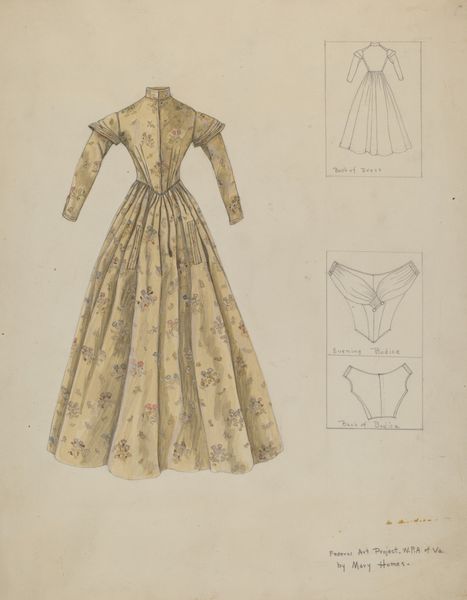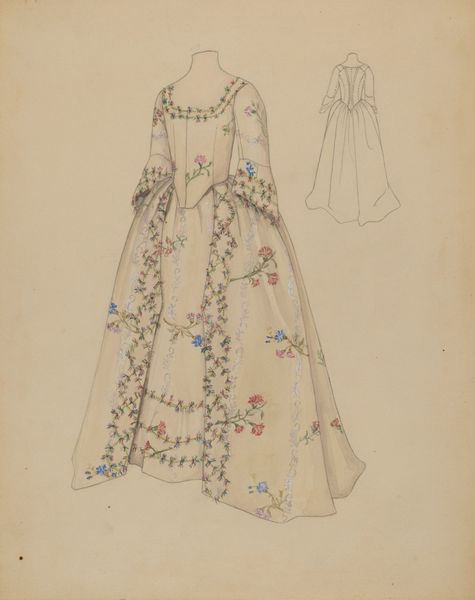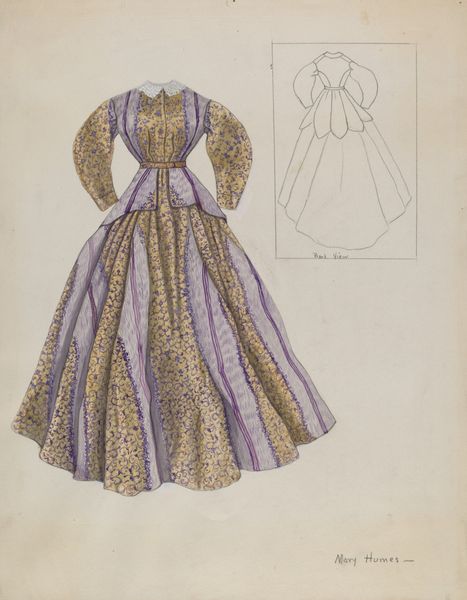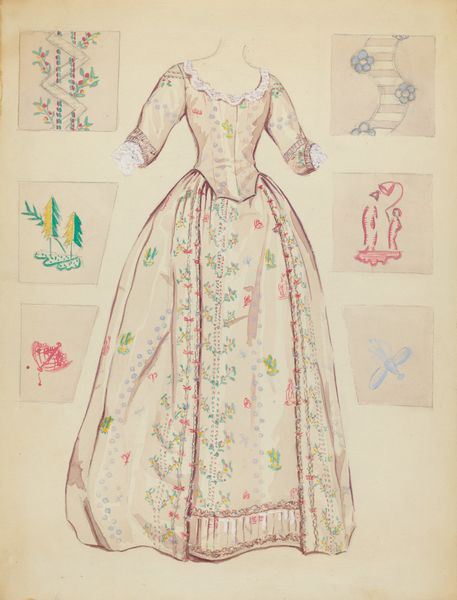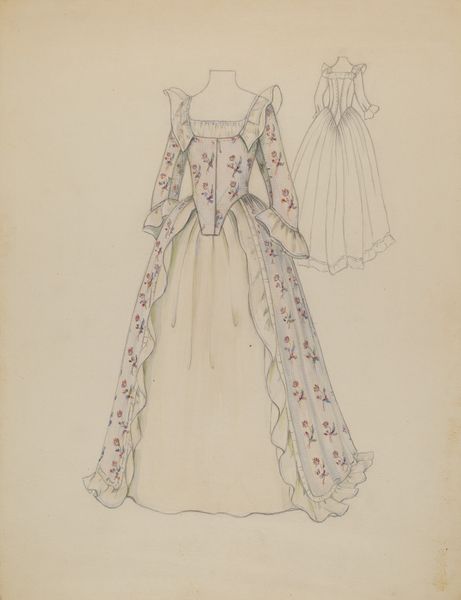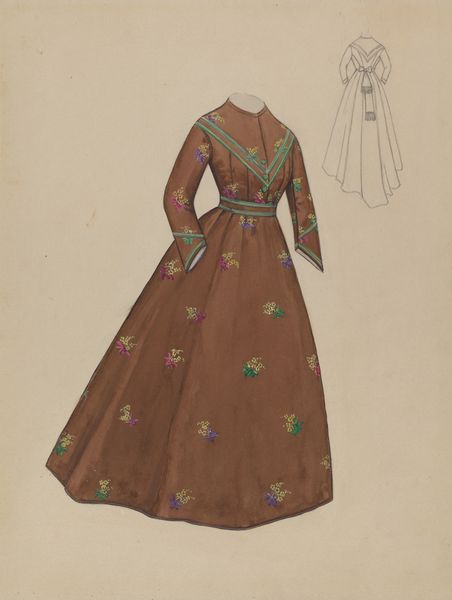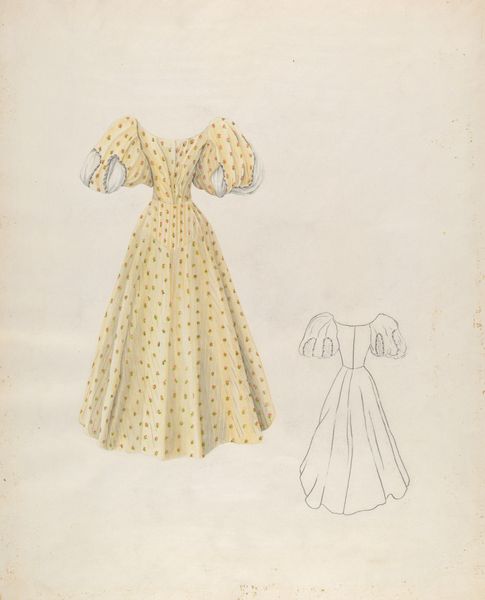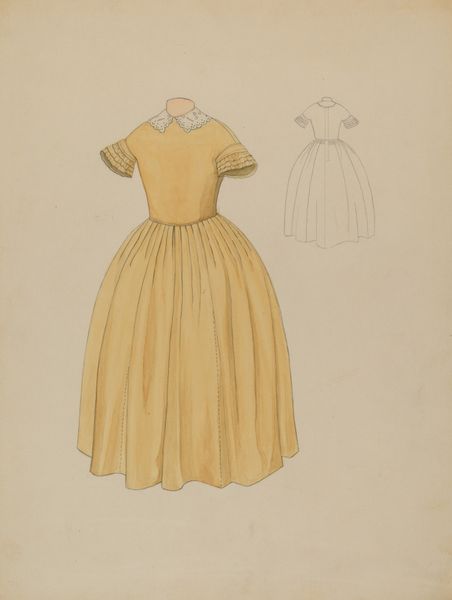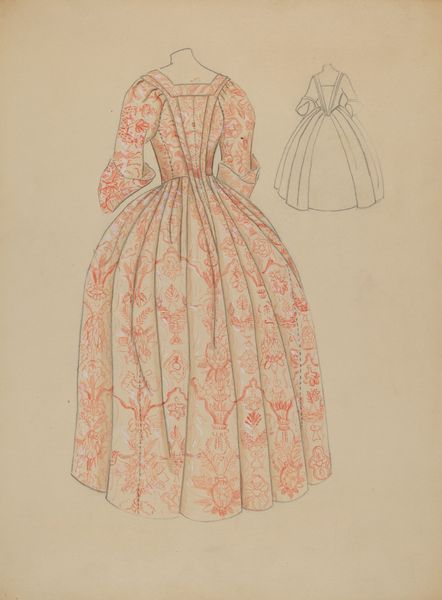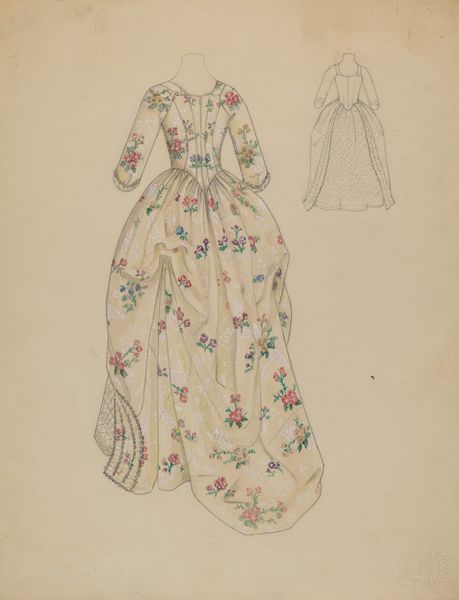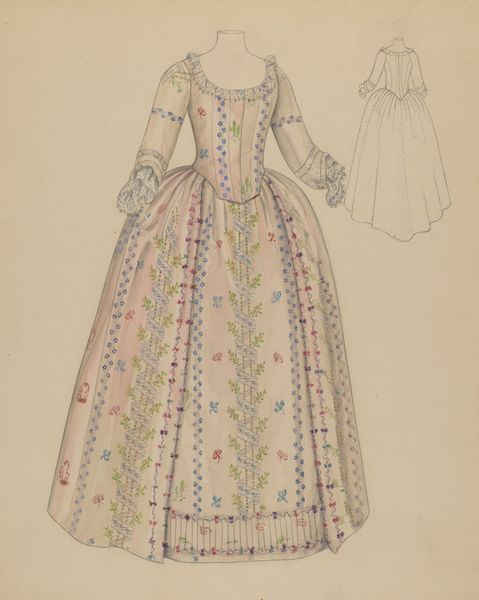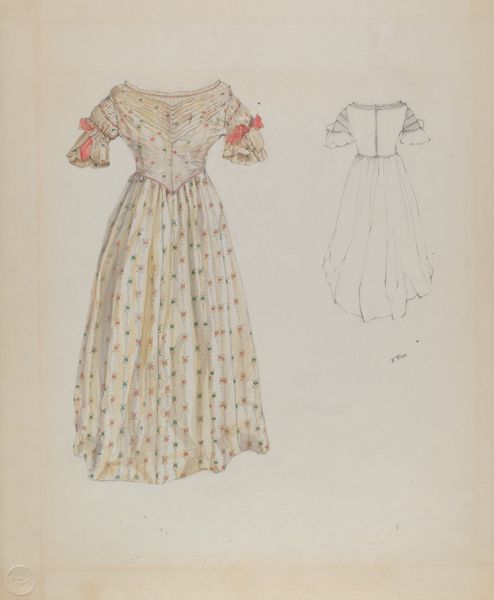
drawing, paper, pencil
#
fashion design
#
drawing
#
underwear fashion design
#
light pencil work
#
fashion mockup
#
fashion and textile design
#
paper
#
personal sketchbook
#
historical fashion
#
pencil
#
fashion sketch
#
clothing design
#
bridal fashion
Dimensions: overall: 35.5 x 27.8 cm (14 x 10 15/16 in.) Original IAD Object: 180" in circumfrence
Copyright: National Gallery of Art: CC0 1.0
Editor: This drawing, simply titled "Dress" from around 1936 by Syrena Swanson, is a delicate pencil and paper piece. It strikes me as quite whimsical, almost like a page torn from a fairytale costume book. What catches your eye? Curator: Initially, I'm drawn to the formal properties of Swanson's composition. Observe the rhythmic repetition of floral motifs, carefully arranged across the garment's expanse. The light pencil work emphasizes the delicate balance between structure and ornamentation. How does the interplay of line and form contribute to your understanding of the design itself? Editor: I guess the softness of the pencil work gives it a light, airy feel. The floral pattern doesn't seem randomly placed, but organized. What do you make of the almost technical drawing style? Curator: Precisely. This aesthetic is crucial. Note how Swanson employs precise lines to articulate the garment's construction, juxtaposed against the more fluid rendering of the fabric's drape and texture. We might also consider this work a fashion mockup and see the historical context from which the garment emanates through semiotic decoding. Consider the puff sleeves, high waist, or long skirt: What are you drawing from these historical fashion points? Editor: The puff sleeves do evoke a certain era; and it definitely feels more functional than ornamental. That brings me to the "underwear fashion design" tag. Would that make this more of an undergarment mockup or how the dress looks under specific lighting conditions? Curator: An astute observation. Now let us contemplate on the placement and repetition of the line work to discern what that may imply and let it influence our perspective. Ultimately, this methodology will yield a clearer, if not empirically concrete, appreciation of Swanson’s formal achievement in its historical placement. Editor: That's really helpful, seeing the image through the lens of its formal structure and the techniques used!
Comments
No comments
Be the first to comment and join the conversation on the ultimate creative platform.

